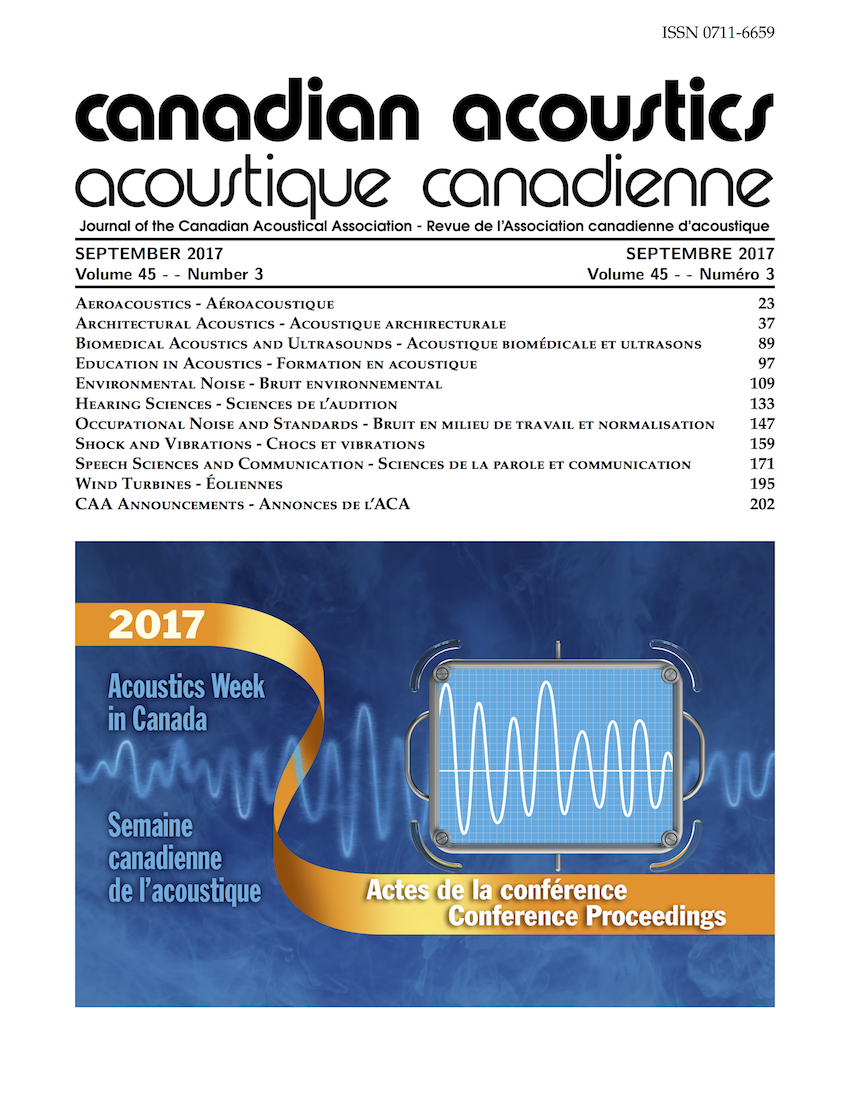Room Acoustics Model Calibration: A Case Study with Measurements
Abstract
Due to complaints of poor speech intelligibility in a wine-tasting classroom, an acoustical investigation was conducted. Impulse response measurements were performed and a ray-tracing model was created using Odeon. Since the room's surface material properties were not definitively known, initial estimates were made and the model was calibrated based on the impulse response measurements using a recursive genetic algorithm. The proposed retrofit acoustical materials were evaluated by modifying the calibrated model based on manufacturer's data. The prediction results demonstrated a significant improvement in speech intelligibility should be expected. After the retrofit materials were installed, post-construction impulse response measurements were performed and good agreement with the modelling results was found. Subjectively, the predicted improvement in speech intelligibility was confirmed by end-user observations.
Additional Files
Published
How to Cite
Issue
Section
License
Author Licensing Addendum
This Licensing Addendum ("Addendum") is entered into between the undersigned Author(s) and Canadian Acoustics journal published by the Canadian Acoustical Association (hereinafter referred to as the "Publisher"). The Author(s) and the Publisher agree as follows:
-
Retained Rights: The Author(s) retain(s) the following rights:
- The right to reproduce, distribute, and publicly display the Work on the Author's personal website or the website of the Author's institution.
- The right to use the Work in the Author's teaching activities and presentations.
- The right to include the Work in a compilation for the Author's personal use, not for sale.
-
Grant of License: The Author(s) grant(s) to the Publisher a worldwide exclusive license to publish, reproduce, distribute, and display the Work in Canadian Acoustics and any other formats and media deemed appropriate by the Publisher.
-
Attribution: The Publisher agrees to include proper attribution to the Author(s) in all publications and reproductions of the Work.
-
No Conflict: This Addendum is intended to be in harmony with, and not in conflict with, the terms and conditions of the original agreement entered into between the Author(s) and the Publisher.
-
Copyright Clause: Copyright on articles is held by the Author(s). The corresponding Author has the right to grant on behalf of all Authors and does grant on behalf of all Authors, a worldwide exclusive license to the Publisher and its licensees in perpetuity, in all forms, formats, and media (whether known now or created in the future), including but not limited to the rights to publish, reproduce, distribute, display, store, translate, create adaptations, reprints, include within collections, and create summaries, extracts, and/or abstracts of the Contribution.


